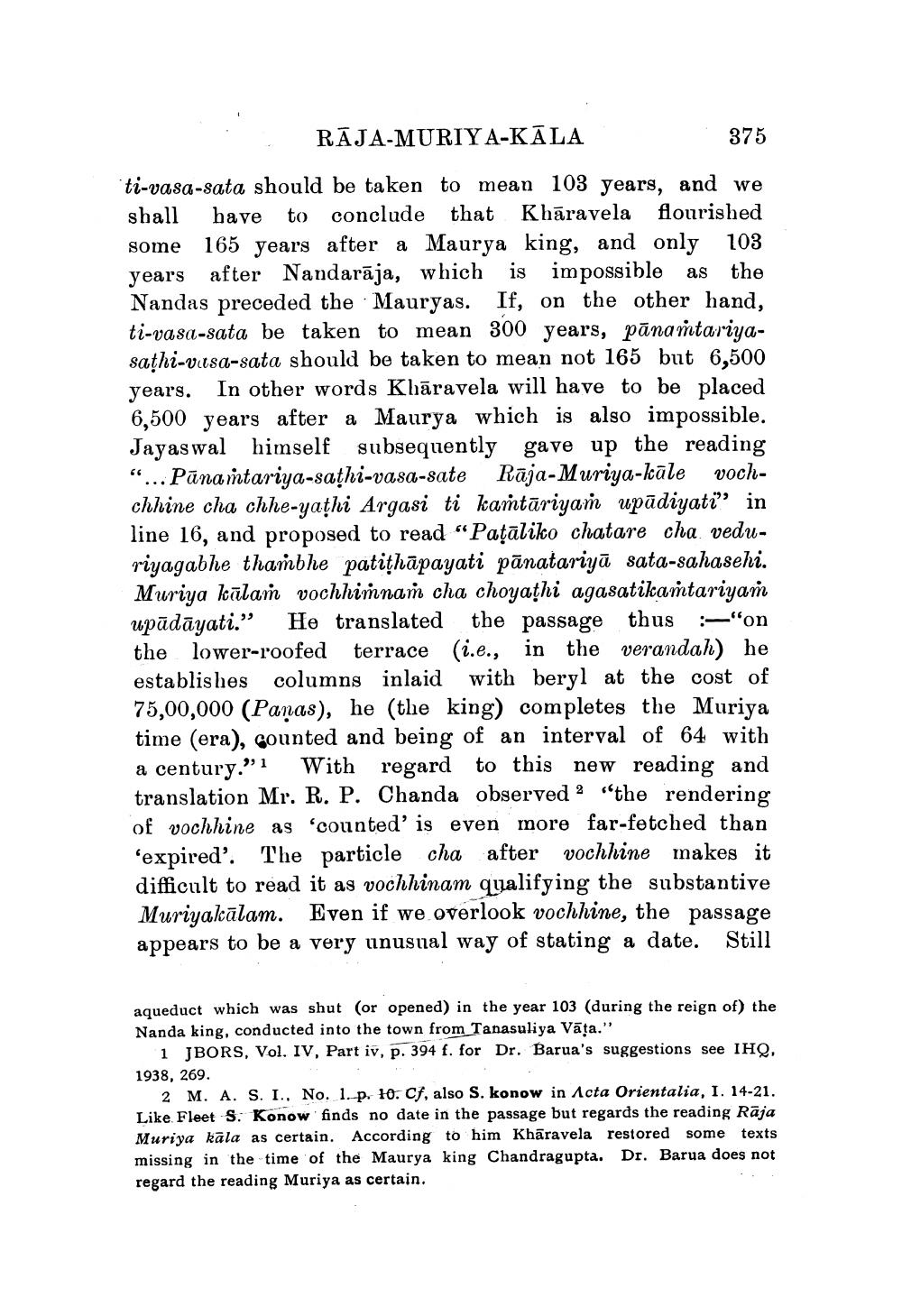________________
RĀJA-MURIYA-KĀLA
375 ti-vasa-sata should be taken to mean 103 years, and we shall have to conclude that Khāravela flourished some 165 years after a Maurya king, and only 103 years after Nandarāja, which is impossible as the Nandas preceded the Mauryas. If, on the other hand, ti-vasa-sata be taken to mean 300 years, pānamtariyasathi-visa-sata should be taken to mean not 165 but 6,500 years. In other words Khāravela will have to be placed 6,500 years after a Maurya which is also impossible. Jayaswal himself subsequently gave up the reading “... Pānaṁtariya-sathi-vasa-sate Rāja-Muriya-kāle vochchhine cha chhe-yathi Argasi ti kaṁtāriyam upādiyati” in line 16, and proposed to read “Patāliko chatare cha. veduriyagabhe thambhe patithāpayati pānatariyā sata-sahasehi. Muriya kālam vochhimnaṁ cha choyathi agasatikamtariyam upādāyati.” He translated the passage thus :-"on the lower-roofed terrace (i.e., in the verandah) he establishes columns inlaid with beryl at the cost of 75,00,000 (Panas), he (the king) completes the Muriya time (era), counted and being of an interval of 64 with a century." With regard to this new reading and translation Mr. R. P. Chanda observed 2 "the rendering of vochhine as 'counted' is even more far-fetched than 'expired'. The particle cha after vochhine makes it difficult to read it as vochhinam qualifying the substantive Muriyakālam. Even if we overlook vochhine, the passage appears to be a very unusual way of stating a date. Still
aqueduct which was shut (or opened) in the year 103 (during the reign of) the Nanda king, conducted into the town from Tanasuliya Vāta."
1 JBORS, Vol. IV, Part iv, p. 394 f. for Dr. Barua's suggestions see IHQ, 1938, 269.
2 M. A. S. I., No. 1. p. 10. Cf, also S. konow in Acta Orientalia, I. 14-21. Like Fleet S. Konow finds no date in the passage but regards the reading Rāja Muriya kala as certain. According to him Khāravela restored some texts missing in the time of the Maurya king Chandragupta. Dr. Barua does not regard the reading Muriya as certain.




